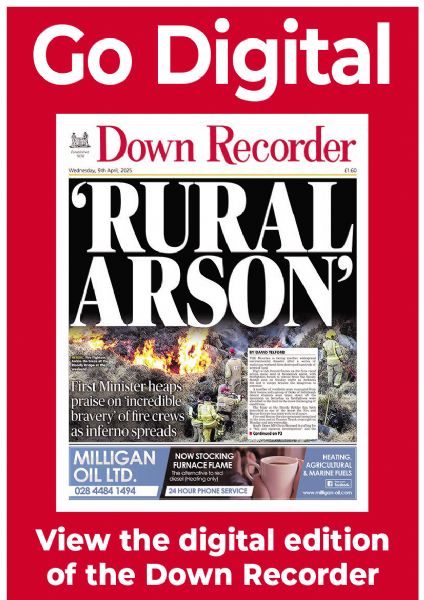Hero or villain? New book uncovers dark side to Killyleagh’s Sir Hans Sloane
Hero or villain? New book uncovers dark side to Killyleagh’s Sir Hans Sloane
7 June 2017
PORTRAYED as neither hero nor villain, a new biography of Killyleagh’s most famous son attempts to flesh out his astonishing story.
Hans Sloane — a doctor and leading naturalist who dreamed of cataloguing the world — is probably best known for founding the British Museum and bringing drinking chocolate to Europe.
But while a seminal figure of 18th century England, he isn’t exactly a household name outside of Killyleagh, which a new book aims to tackle.
Professor James Delbourgo’s ‘Collecting the World: The Life and Curiosity of Hans Sloane’ is the first modern biography of Sloane, and enthusiasts will be pleased to see the epic collector given his proper place in history. However, the detail of his treatment of Jamaican slaves — when, as personal physician, he accompanied the new Governor, the Duke of Albermarle, to Jamaica in 1687 — is also fully explored and makes uncomfortable reading.
As leading historian Richard Drayton puts it in his review of the book: “Delbourgo is the first to collect the whole arc of his prodigious life and to dare to show how Sloane’s connections to African slavery and colonial expansion were central to the making of 18th-century British science and polite society, from milk chocolate to public museums.”
The biography explains that Sloane was interested in documenting the exotic plants he had only ever heard of, which prompted the trip to Jamaica. He was also aware that Jamaica’s planters would pay handsomely for his medical services to keep their slaves alive and profits flowing.
Professor Delbourgo claims that Sloane responded solicitously to white patients’ complaints, but repeatedly challenged slaves’ statements about their health.
“Nowhere in the case histories does he acknowledge the miseries suffered by the enslaved,” he writes. “While he ministered with care and respect to while alcoholics, he scorned slaves’ troubles and sought to force them back to work for his planter friends.”
He gives the example Sloane recorded of one ‘lusty negro footman’ who had been ordered to intercept some pirates carrying looted silver but ‘pretended’ to be sick and begged off by ‘dissembling himself in a great agony’.
Delbourgo comments: “Having evidently absorbed the instinctive violence towards slaves of his planter hosts, Sloane sent for a ‘frying-pan with burning coals’ to be applied to Emmanuel’s head and ‘candles to be lit at his hands and feet’ — a tactic that mimicked whites’ methods for torturing and executing slaves’.”
Speaking ahead of his book’s official launch next week, the professor acknowledges that Sloane’s interaction with the Jamaican slaves should be taken in context .
“He is absolutely a man of his time,” he says. “But at the end of the 17th century there were people writing on the horrors and evils of slavery. It was possible to react that way.”
On Sloane’s personality, the author wants us to make up our own mind. But he believes a certain amount of Irish charm helped him build on connections on London after his early years in Killyleagh.
“He came from a family where his parents were servants to aristocrats,” he explains. “It meant he grew up rather at ease with people from different classes.”
In his book he also notes: “Most importantly, Ulster was where Sloane discovered the natural world and was first captivated by the prospect of its possession. He marvelled at the flora and fauna around Killyleagh, at the western edge of Strangford Lough, not far from the Irish Sea. The eggs he and his companions took from the seagulls probably came from the nearby Copeland Islands.
“The Hamiltons likely gave him his first intellectual exposure by granting access to their library at Killyleagh Castle, and although no record of what he read survives there, the young Protestant Sloane surely read his bible. This heritage would have rooted in him a tradition of Christian reverence for the natural world but it would also have given him a sense of duty to use it for human advantage.”
On the cusp between the pre and post enlightenment mind, Professor Delbourgo believes Sloane hasn’t got the recognition he deserves. And it is partly, it seems, because his fingers were in so many pies.
“These different areas are now studied separately,” he explains. “He became very out of date. It was before more modern forms of science and it came to be seen odd that someone would collect plants and fish and anatomical curiosities.
“I think he is a very important figure. I cannot really make him a hero or a villain. What I have done is connect certain phases of history we don’t usually connect.
You certainly can’t dismiss him. I wanted to make him a much more compelling figure for history to embrace.”
Perhaps this totemic figure softened with age, as Sloane was reported to have given the poor free medical treatment. He was also a founding governor of the Foundling Hospital, the nation’s first institution to care for abandoned children.
His biggest legacy was, however, his books, manus, prints, drawings, flora, fauna, medals, coins, seals, cameos and other curiosities which he bequeathed to the nation at the end of his life. The collection was bought by an act of Parliament to become the core collection of the British Museum, founding the world’s first free national public museum.
For Professor Delbourgo it’s a gift that has been greatly overlooked. He concludes: “There was nothing inevitable about the creation of public museums, and there is nothing inevitable about their survival: in a political environment where public goods are increasingly privatised, Sloane’s legacy of free access must be championed rather than take for granted.”


